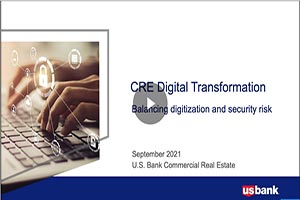Today, thanks to online retailers like Amazon, customers expect a higher level of service along their purchasing journey, including an easier merchandise return process and free return shipping. And some retailers are taking note: This holiday season, Kohl’s is allowing self-returns in 200 of its stores across the country, enabling customers to bypass long lines and take control of the return process. Customers can walk in a participating store, scan their product, initiate the return, put it in a bag and drop it in a slot, Paul Gaffney, Kohl’s chief technology and supply chain officer told USA TODAY. The added convenience could help Kohl’s attract and retain more customers and increase sales.
In fact, according to a survey conducted by the eCommerce management platform Narvar, 95% of online shoppers polled said they would shop again with a retailer that provided a satisfactory return experience, and 82% of survey participants who had returned a purchase to a retailer indicated they were repeat shoppers of the store.
In light of this research, returns are teeing up to be the next retail service differentiator in 2022.
How to make the return process easier for customers
Offer free returns and shipping
While there are many steps a retailer can take to make the merchandise return process easier for customers, free returns and shipping continue to top the list. According to Power Review’s Consumer Survey: Returns in Retail in 2021, consumer interest in free shipping and returns remain at an all-time high. Nearly 96% of all shoppers consider free shipping important, with free returns coming in second at 79%.
A study spearheaded by Amanda B. Bower, head of the department of business administration at Washington and Lee University in Virginia, revealed customers who paid for their return decreased their spending at that retailer by 74% to 100% over two years. Conversely, free returns resulted in customers spending between 158% and 457% more than their pre-return spending, as reported by shipping software company ShipStation.
Sure, merchandise returns can have a significant impact on your bottom line but based on this research, making the return process easier for your customers can ultimately increase sales and help build your business.
Streamline processes, automate retail returns
To make merchandise returns easier for customers, retailers may want to streamline or automate the process. SOTI’s State of Mobility in Retail 2021 Report revealed that 63% of consumers expressed dissatisfaction with the return processes offered by in-store retailers, stating they would prefer an easier or automated process. Streamlining or automating refund processes to meet growing customer demands is quickly becoming a necessity.
Modern technology solutions address these challenges, providing a seamless experience for retailers and consumers alike. For example, consider a scenario in which a customer wants to return a purchase without a receipt. A modern POS solution can make it possible for a sales clerk to use customer information—such as name or phone number—to look up the transaction and promptly issue a refund.
The impact of merchandise returns on retail inventory
Still, merchandise returns present several challenges for retailers, including tracking, storing and adding new inventory. When a customer returns a purchase, the retailer usually scans the return into the system, issues an almost-immediate refund to the customer, and puts the item back in stock or storage.
The returned item can sit there for weeks before making its way back into the retailer’s inventory. The lag can create a disconnect, causing businesses to order more products than they need or tell a customer that an item they want is out of stock when, in fact, it’s available.
In today’s competitive landscape, retailers can’t afford to take up limited product storage space with returned merchandise or lose a sale because their inventory is out of date.
Although business owners will always have to manage this challenge, advances in technology make it possible for retailers to track their inventory from the moment it enters the system to its final sale, saving staff time and energy to manage inventory while potentially increasing the bottom line.
Retail returns: The differentiator in 2022
With eCommerce sales rising and consumer preferences and behaviors driving retailers’ strategies for the year ahead, merchandise returns may become a differentiator in 2022. Retailers can seize the opportunity by considering upgrades to their technology, streamlining and automating processes and addressing customers’ evolving needs to enhance loyalty.
Continue reading to learn more about how to identify what technology is needed for your small business.









































